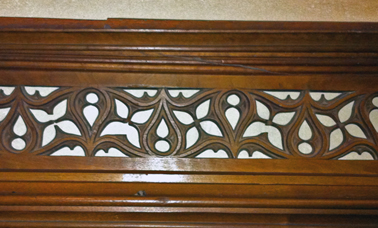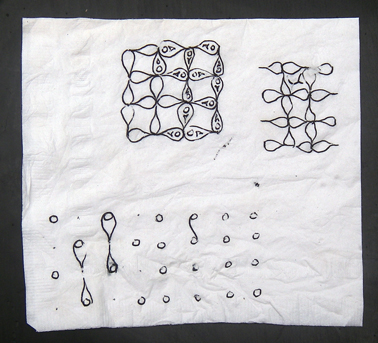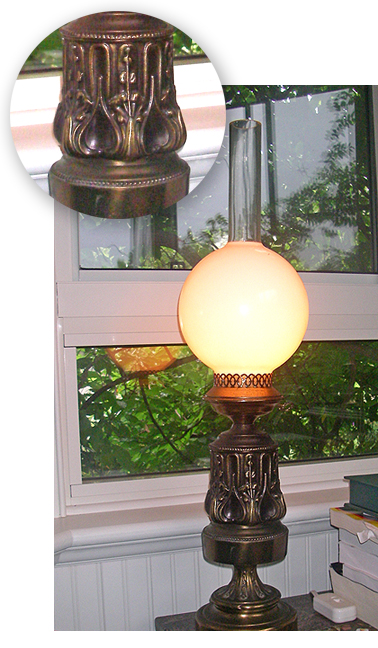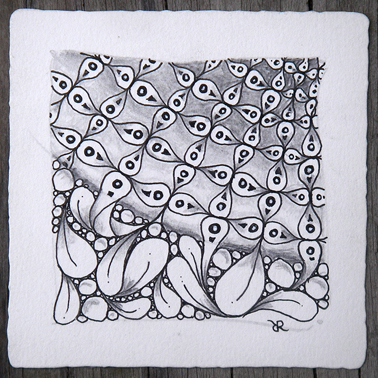Earlier this year, we visited The Cloisters in New York City. The Cloisters is a museum dedicated to housing 12th through 15th century art and architecture. It's a feast of patterns!
One item there was a bench with a high backrest. Its top was finished with this beautiful pattern.

A couple days ago, I was sorting through one of my stacks and came across this napkin sketch I did on our drive back home from the Cloisters.

In the "Zentomology" of all things tangled, you'll notice that
assunta is a close relative of
cadent.
Originally, I started with a grid of dots, but it required too much thinking to keep track of which dot was the pointy end and which the rounded end of each stroke.
Instead of dots, the next idea was to use short alternating lines like on this utility cover.

This completely solved my need to think and plan. And paradoxically by "taking off" and "landing" in alignment with these small straight lines, it helped smooth the curves.
This exquisite tangle is made from two basic shapes:
- a short straight line
- half of an S-curve

Hint #1 Make your straight lines short.
Hint #2 Think of your short straight lines as a runway. Retrace them when "taking off" and when "landing" with your curved line.
Hint #3Rotate your tile however it's most comfortable for you. I prefer to draw my strokes in the same or a similar direction.
-----+-----
This gives a good look into our process of discovering patterns and deconstructing them into simple and fun tangles.
You can read more about our Cloisters trip and what it inspired
here,
here and
here.
-----+-----
And in a moment of sweet serendipity I noticed this lamp on our porch. It used to belong to Maria's mom.
Check out the shape in its pattern.

Happy Birthday, Maria!
